How the discounters are beating the supermarkets
- Published
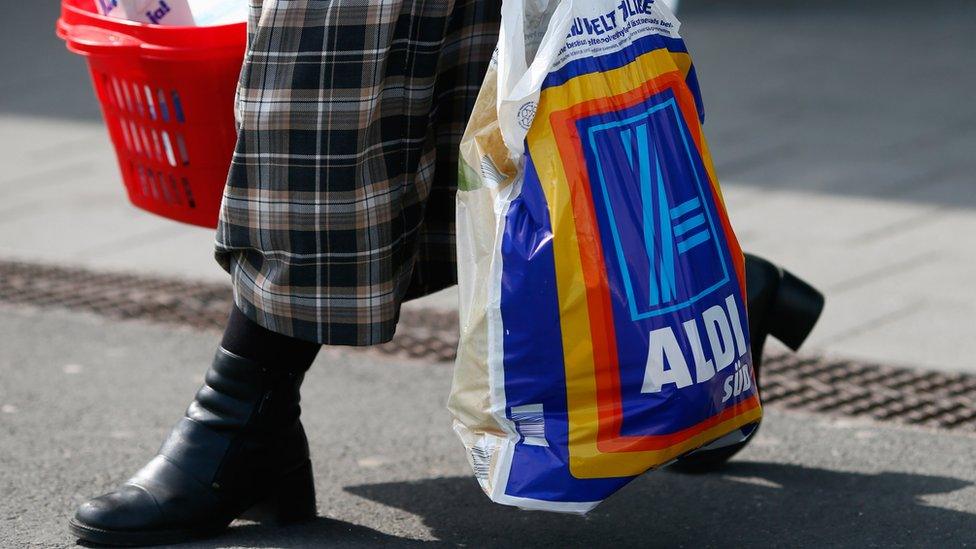
Britain's supermarkets are facing a serious challenge from German discounters like Aldi and Lidl
Where you shop in Britain has always been one of the great social signifiers.
According to shopping folklore, for the middle classes it is Marks and Spencer, for the upper-middle class Waitrose, and Morrisons is the redoubt of lower-middle class Britain.
But the big four retailers - Tesco, Asda, Sainsbury's and Morrisons - have been facing a game-changing threat as German competitors Aldi and Lidl cut into their market share with no-frills shopping that is marking a generational shift in retail patterns.
The latest statistics for the 12 weeks to 13 September from Kantar World Panel UK show just how bruising the business landscape has become for the UK's grocery retailers.
The big four still occupy the commanding heights in terms of market share in grocery retail: Tesco 28.2%, Asda 16.7%, Sainsbury's 16.2%, Morrisons 10.7%.
By comparison, Aldi still only has 5.6%, and Lidl 4.2%, of the entire UK grocery market.
But it is in the growth figures that the pain is visible.
Brutal competition
Sainsbury's managed a mere 0.9% growth over the same period, Tesco and Morrisons both dropped 1.4%, while Asda fell 2.9% in terms of sales growth.
Yet Aldi and Lidl have achieved spectacular growth of 17.3% and 16%, respectively.
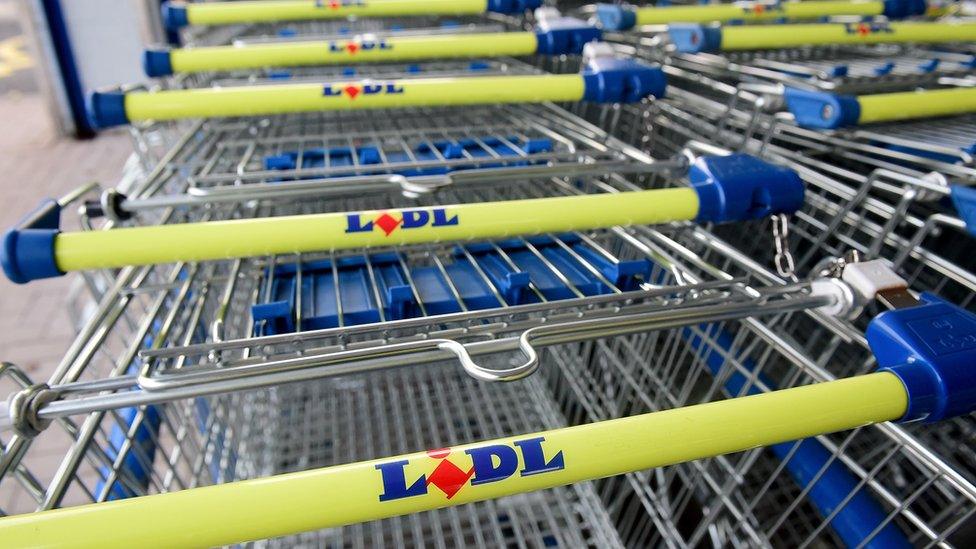
Aldi and Lidl have been gaining ground with Britain's shoppers
What went wrong at Morrisons, in particular, has become a signal lesson in what to avoid in grocery retailing.
Analysts say its thrust for online sales, where the slice of the profits pie is smaller, undermined the profitability at its stores. Also, that its foray into convenience stores did not fit its more traditional format and that austerity and deflation provided the profit-losing backdrop to all of this.
In the meantime, they say, their German competitors have simply built a better mousetrap.
Rather than offering a wide range of choice to trolley-stacking weekly shoppers, the discounting German chains are aimed at the little-but-often shoppers.
Their range might be limited but the quality is often comparable.
By ruthlessly culling brands that don't sell, producing copycat versions of high street lines, and even offering expensive fare in the form of lobster tail and Belgian chocolates, they are reaching a wide audience.
Store closures
According to research and consulting firm Him!, more than 31% of shoppers at Aldi and Lidl are now from the AB demographic, external (A being upper class, B, middle class).
Just two years ago, their share of this segment was as little as 12%.
For the big four, the recent gains of Aldi and Lidl have been like the arrival of a new predator.
This month Morrisons was forced to close 11 stores and shed 900 jobs after it reported a 47% drop in half-year pre-tax profits to £126m. It is also selling its 140 convenience stores for £25m, taking a loss of £30m.
Tesco, too, has been feeling the pain and this month sold its South Korean business Homeplus for £4.2bn to shore up its balance sheet.
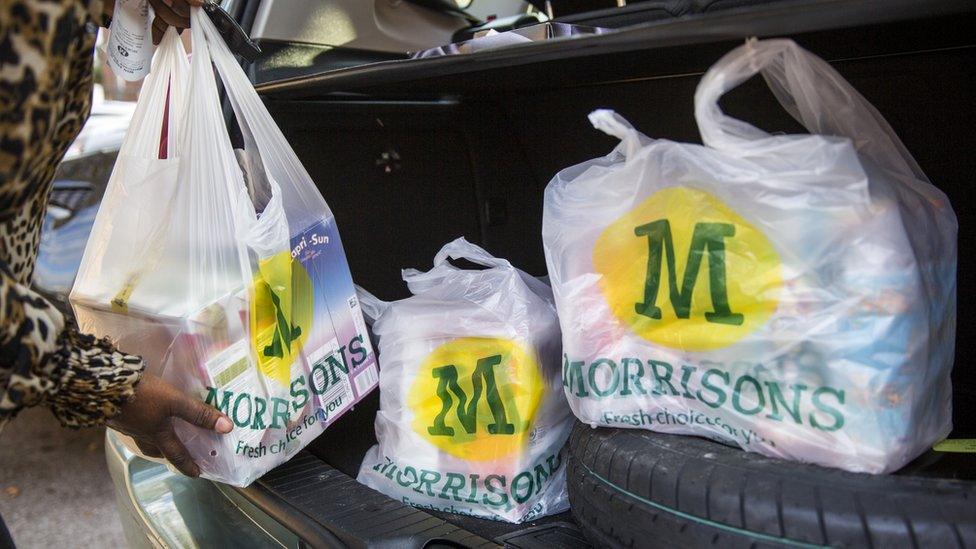
Both Morrisons and Tesco have sold off stores or subsidiaries as a result of the increased competition
Yet Hermann Simon of Simon-Kucher & Partners, a German-based consulting and marketing firm, says the success of the German retail model cannot simply be put down to austerity.
"Lidl and Aldi are not successful because they are cheap, they are successful because they are cheap but still offer consistent quality.
"The quality is about 10% lower than the classical brands but the prices are 30% lower which then means that the customer gets more value per pound spent."
Budget airline model
He likens the success of the German model to budget airlines such as EasyJet and Ryanair.
"The art of Ryanair is to take out all the things that are not absolutely required by the passengers, saving costs and passing these on in the form of lower prices to the customer. At the same time because the prices are lower they increase capacity utilisation.
"Exactly the same pattern applies to Aldi and Lidl - their revenue per square metre is much higher. Every efficiency parameter is better than in the classical stores."
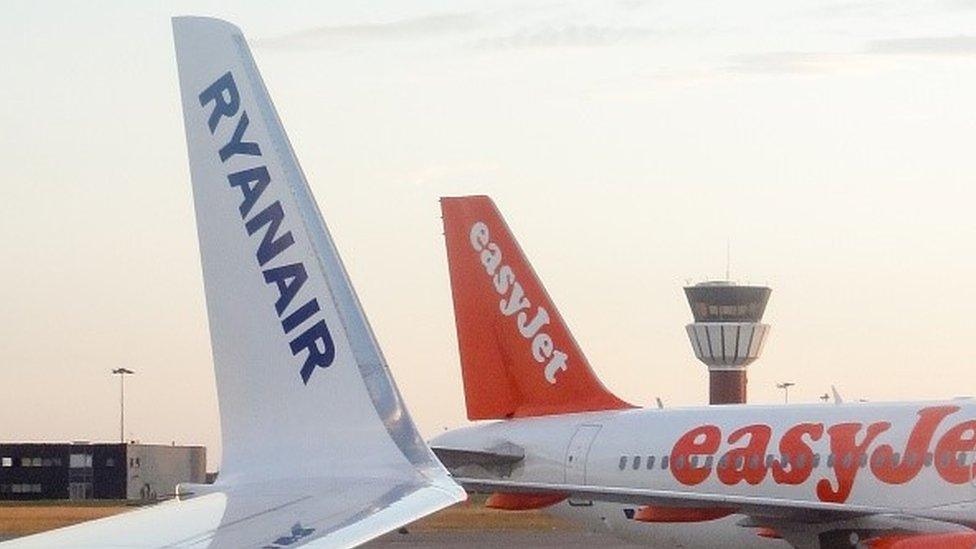
Budget airlines and discount retailers share similar cost saving models
From cheaper lighting, to check-out conveyor belts that drop the groceries straight into the trolley, to bar codes on each side of the product that save the check-out operator time, Aldi and Lidl have optimised their system to save on time and money.
"The old times for Morrisons and Tesco where they could afford to invest mountains of money into the stores and not pay that much attention to efficiency are over," says Mr Simon.
Too big, less nimble
Jon Copestake of the Economist Intelligence Unit says that British retailers had reached a size that makes them much less agile.
"The whole driving point behind Aldi and Lidl's strategy is their limited stock keeping units. They obviously don't have to service the amount of choice that Tesco and Morrisons cater for.
"A typical Aldi store used to have 800 items in it but now it's about 1,200 whereas a place like Tesco five years ago used to have something like 50,000 items.
"You can clearly see that Tesco - by offering this choice - have issues with overstocking and floor space and this has weighed on their bottom line."
Morrisons, he says, was an attractive proposition a decade ago when it stocked unlabelled goods but its expansion into the southeast of Britain and its changing store format has cost them dearly.
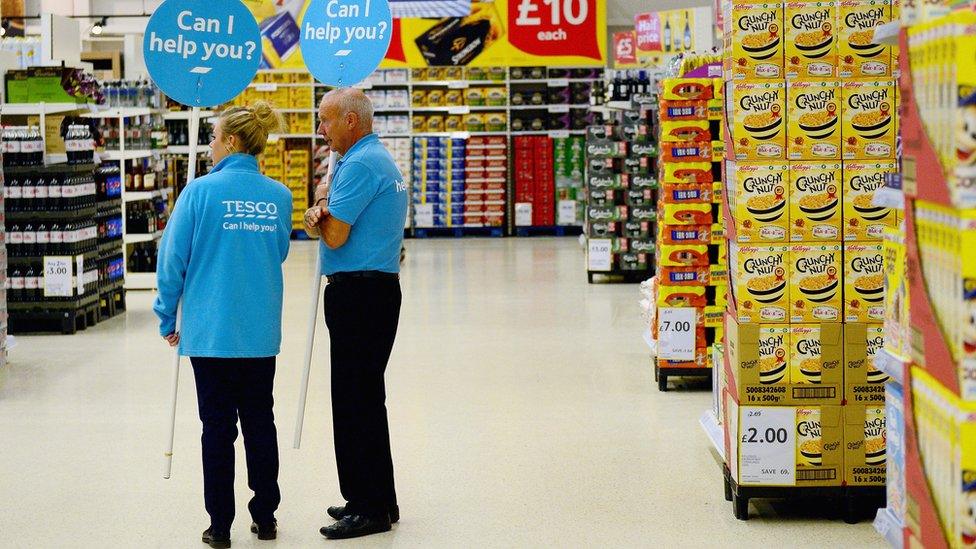
Sometimes offering too much choice can be a problem, say analysts
"They used to have a butchers in every store and a fishmongers in every store which allowed them to create their own efficiencies, but switching to smaller store formats that didn't suit that supply chain structure is one of the things that has really bitten them in the last few years."
Mike Dennis, analyst at Cantor Fitzgerald Research, says promotional offers by the big chains have struggled to keep up with the discounters.
Even while the big chains might offer a product at £1.50 that had once retailed for £2, the discounters could offer a product at a standard price matching this promotional price - and even offer further discounts on top of that, he says.
"In some cases they are buying in combination with their parent company in Germany where they are able to get significantly better terms.
"Add to that, the fact they are operating the business on a vastly reduced cost base compared to any supermarket group - and they have a price advantage that they can sustain."
While real earnings have increased 2.8% over the year, consumer confidence in the UK was largely being channelled into hire purchase cars and European holidays because of a weak euro, says Mr Dennis.
Even this, he says, is playing into the discounters' hands.
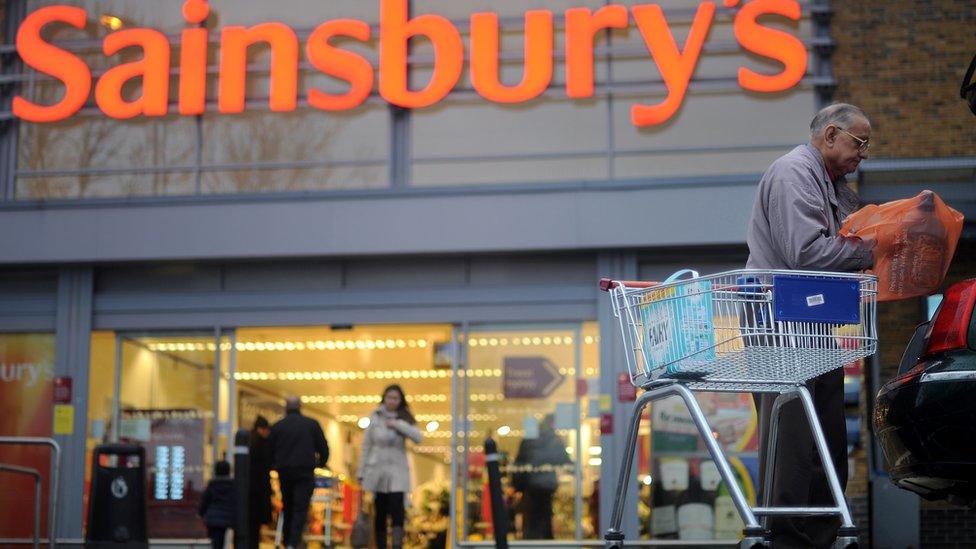
Britain's supermarkets now need to make choices, in order to compete with the discounters
"Middle class people go on holiday to Europe, they rent a villa, buy some local groceries and then they find a Lidl and think, gosh this has all the shopping I want but it's half the price of a local convenience store.
"They come back to the UK and think, well I was happy enough to buy the stuff when I was on holiday, I'm happy enough to buy the stuff in the UK."
Crucial choices
Analysts, however, agree that the game may not yet be over for the big four UK retailers.
Growth in Aldi and Lidl has begun to plateau in Germany where their reach is now at saturation point and UK retailers could stage a comeback if they call a truce in their price war and differentiate themselves by playing to their strengths.
"I think they're having an identity crisis and need to pick a side. They either have to push themselves to the premium end of retailing or push themselves to the discount end," says Mr Dennis.
"The area in the middle that's being occupied by these four mid-market retailers is pulling on either side."
After two years of fierce supermarket turf war, speculation about winners and losers has been rife. But there's one thing analysts do agree on: discounters might have won the battle, but the "big four" could yet win the war.
- Published8 April 2015
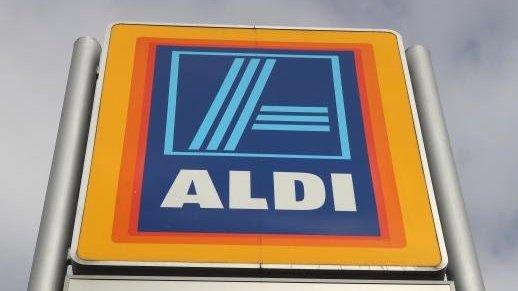
- Published19 December 2013
